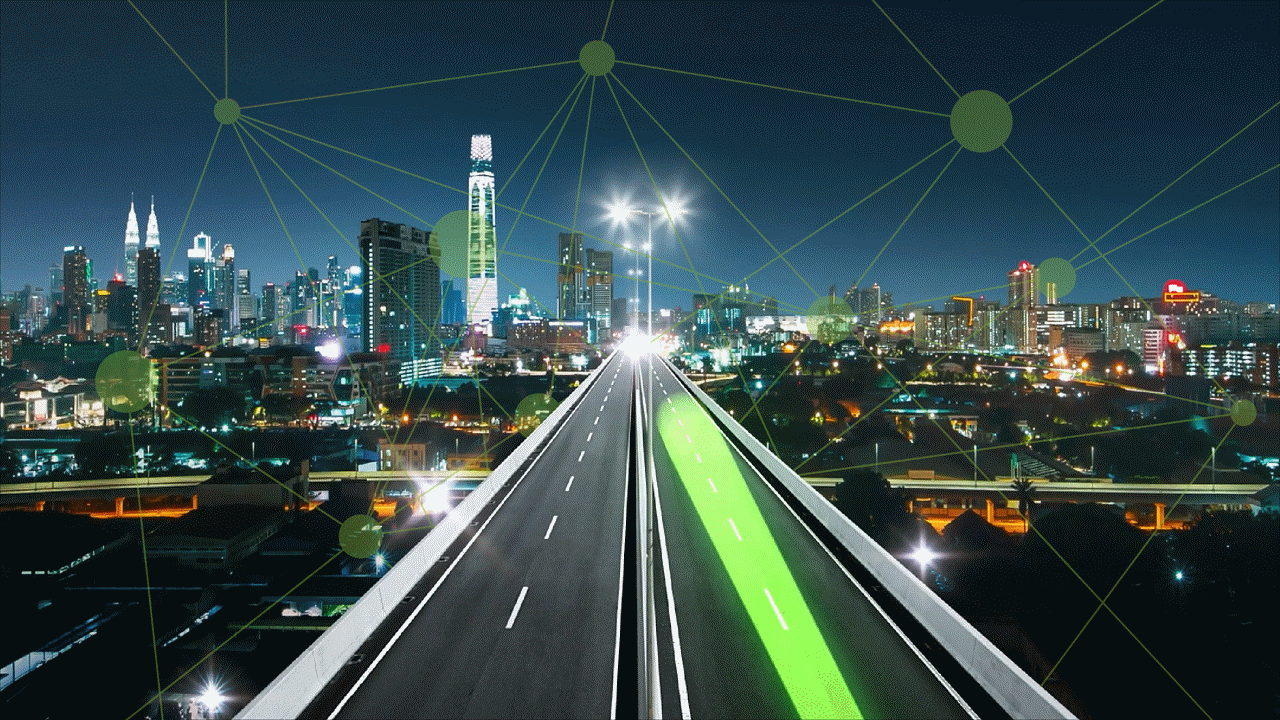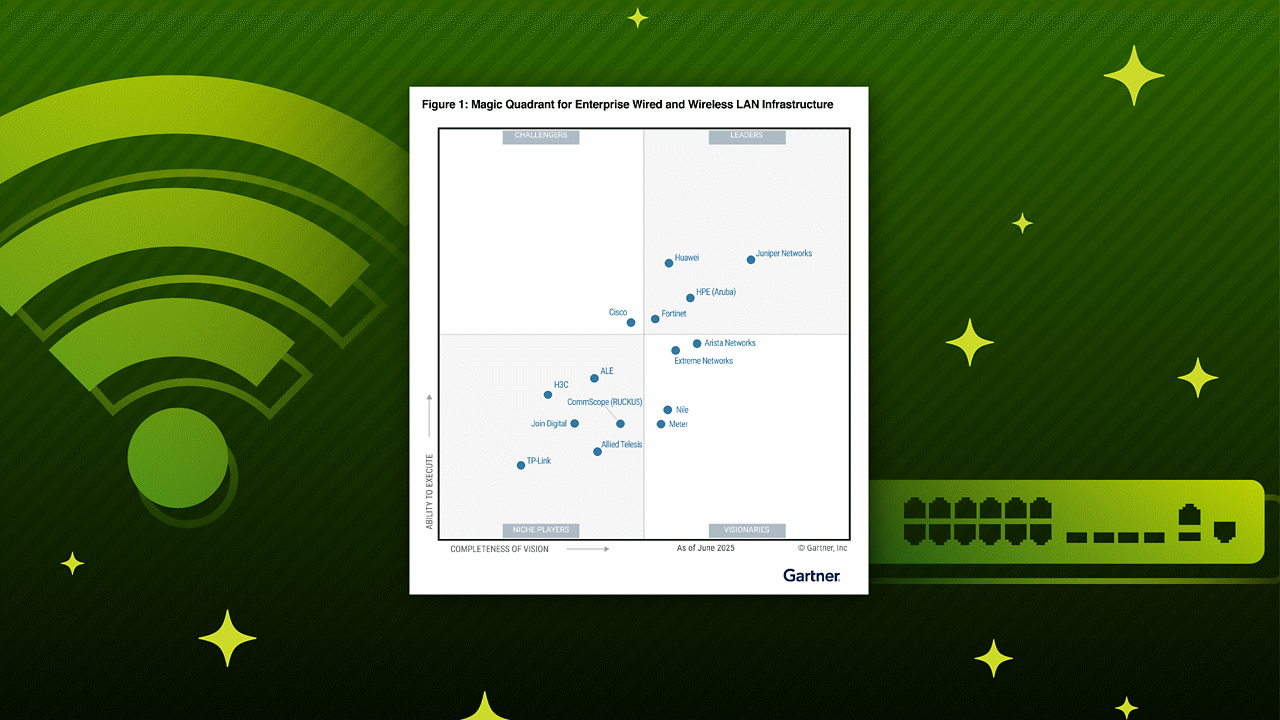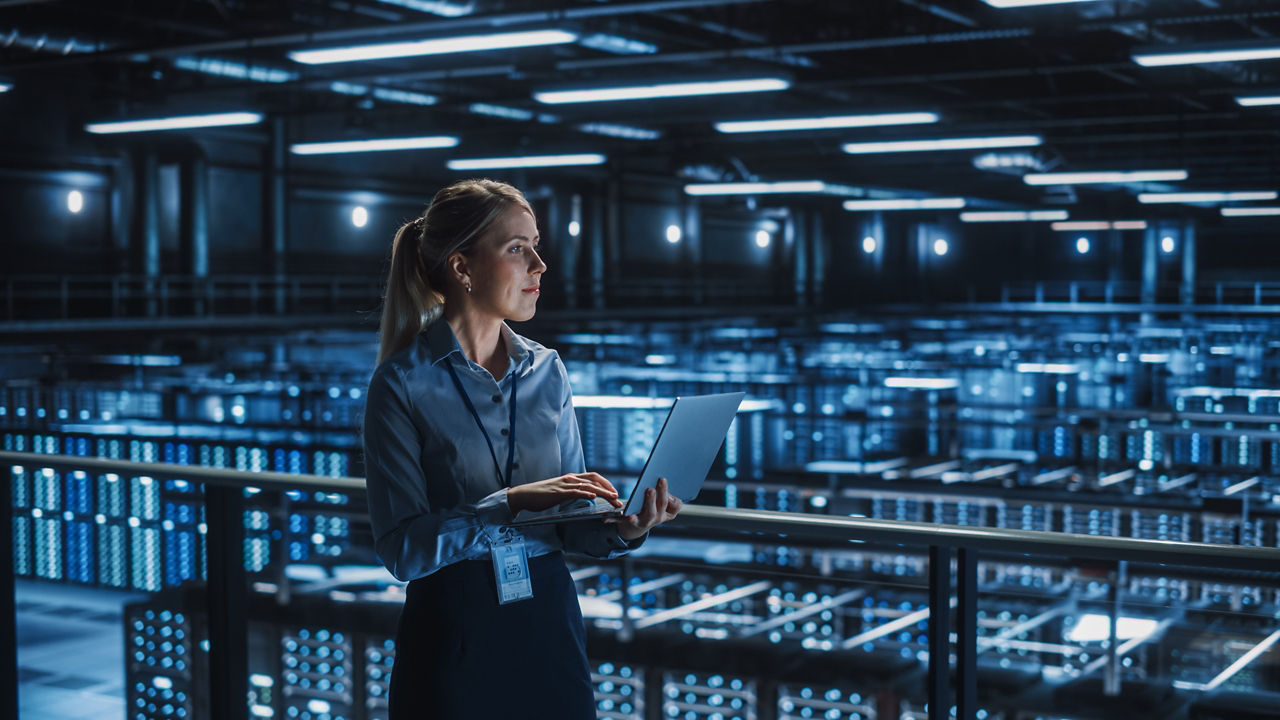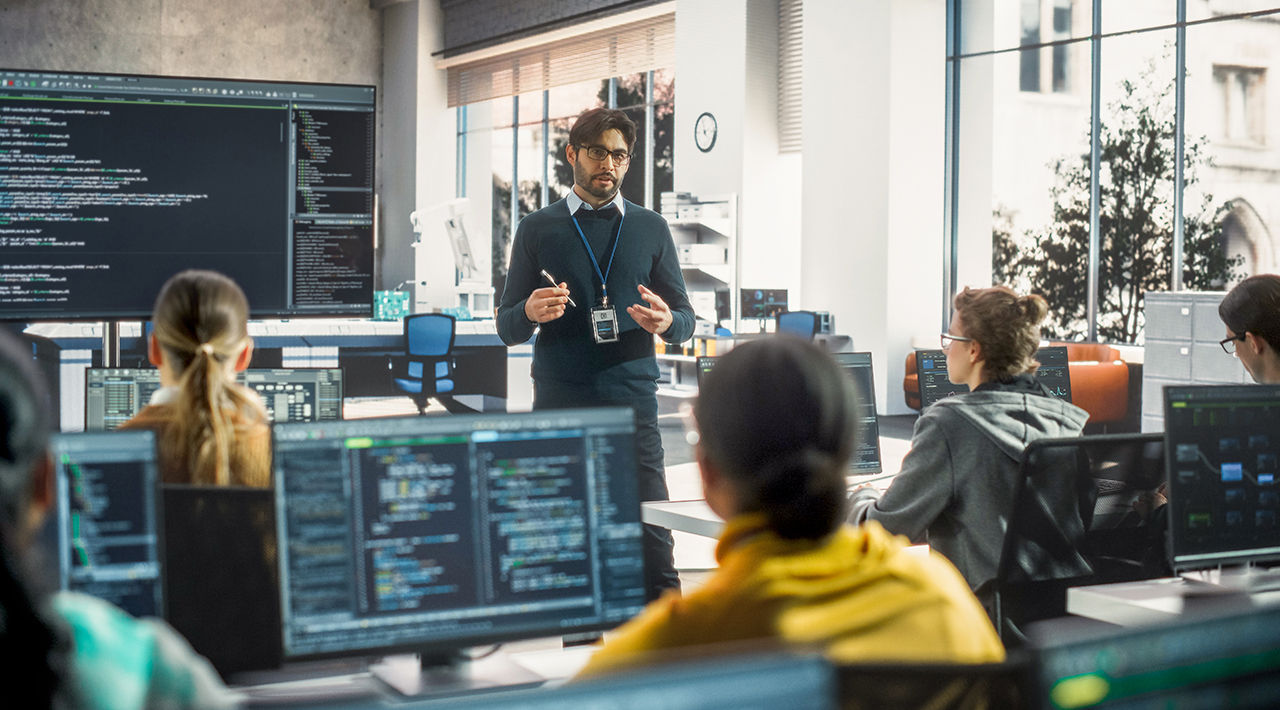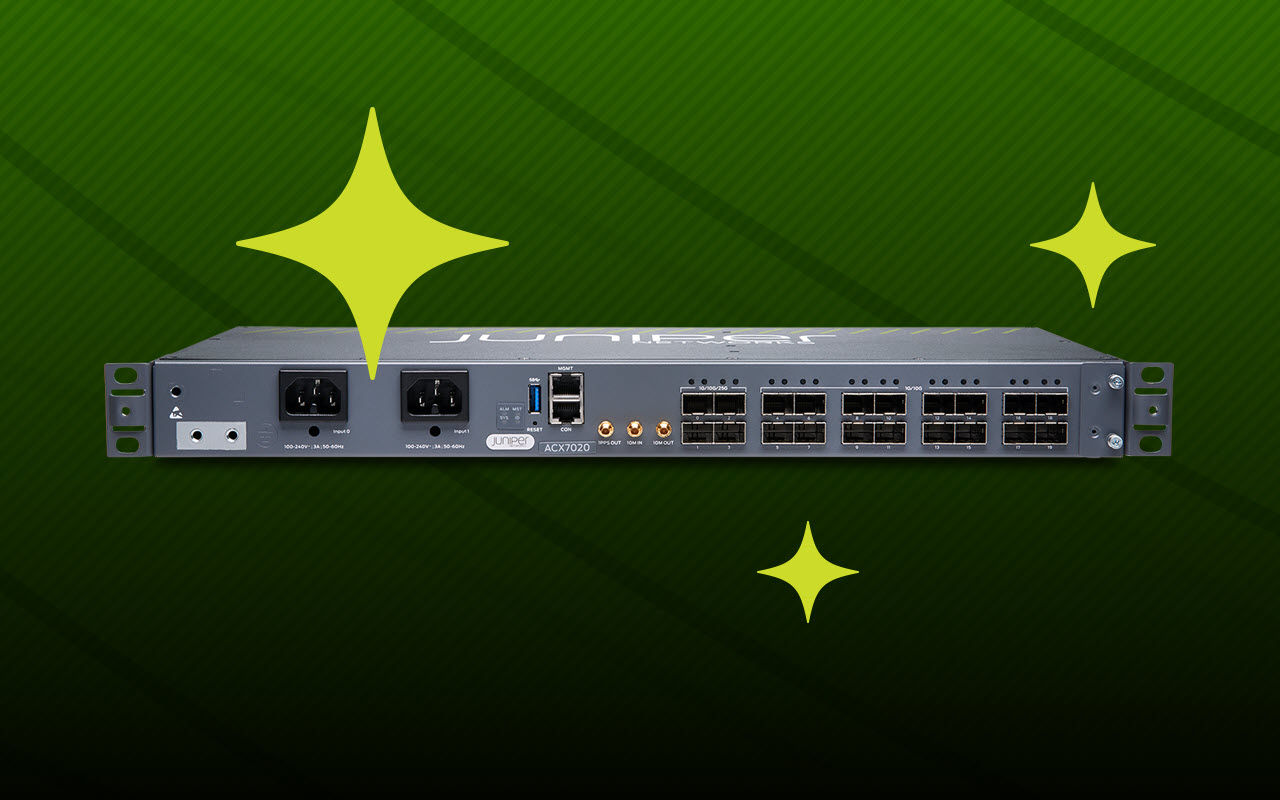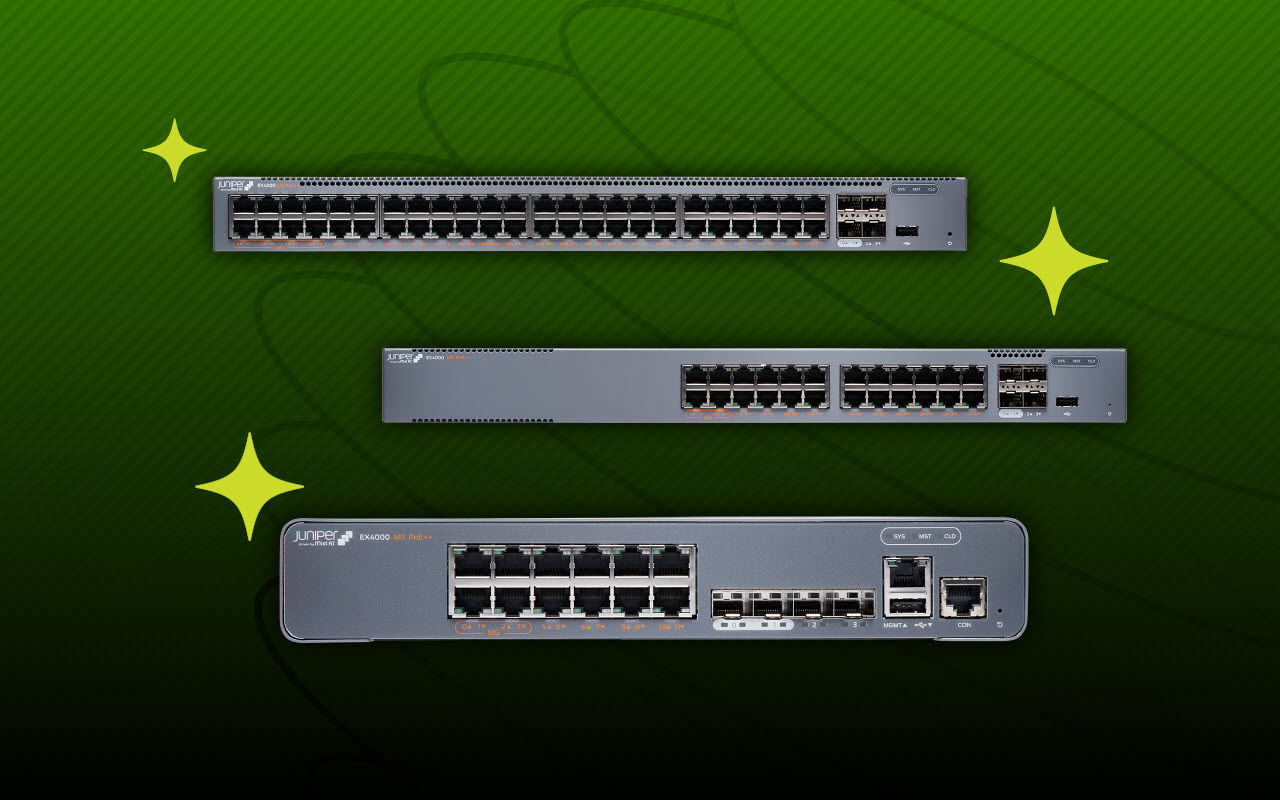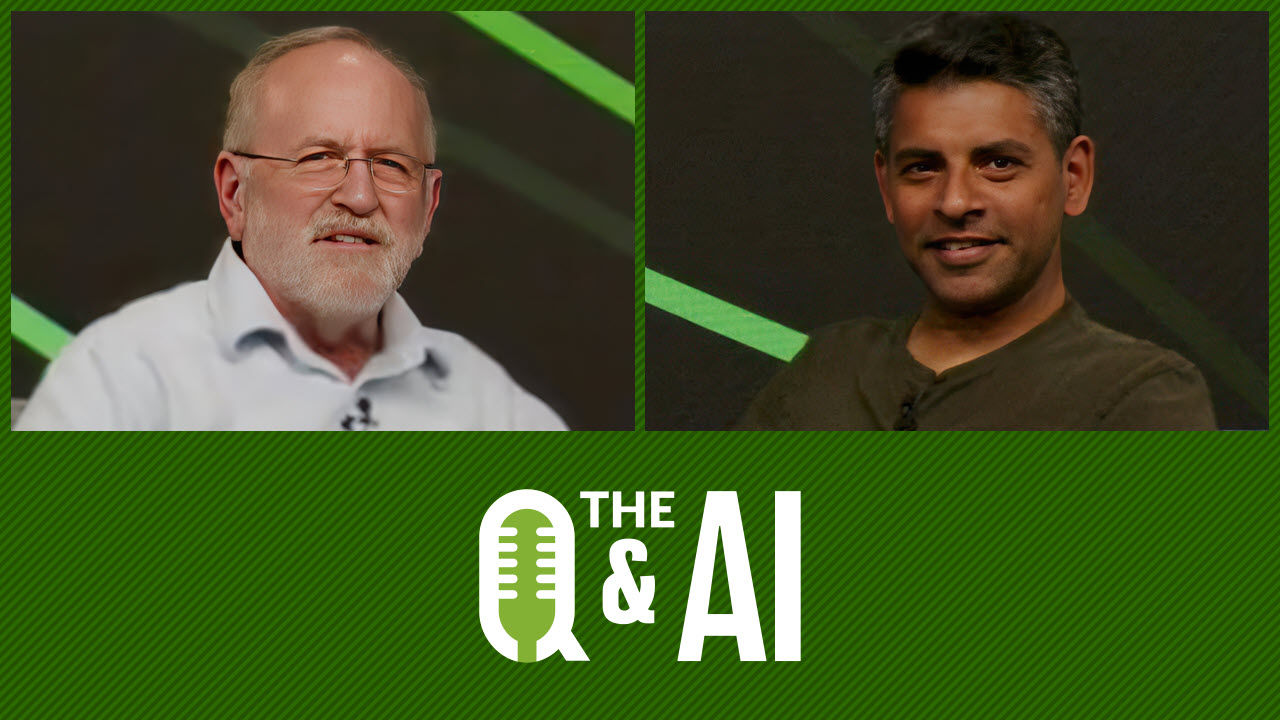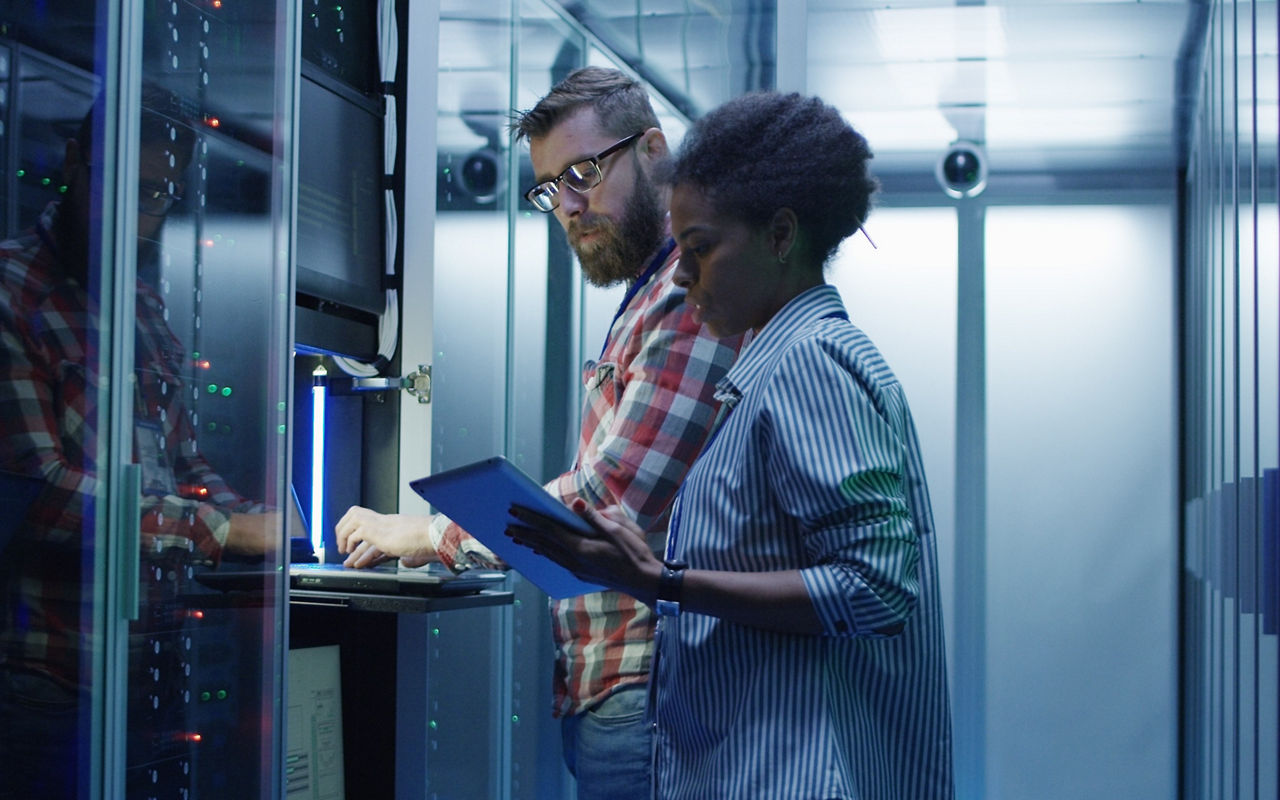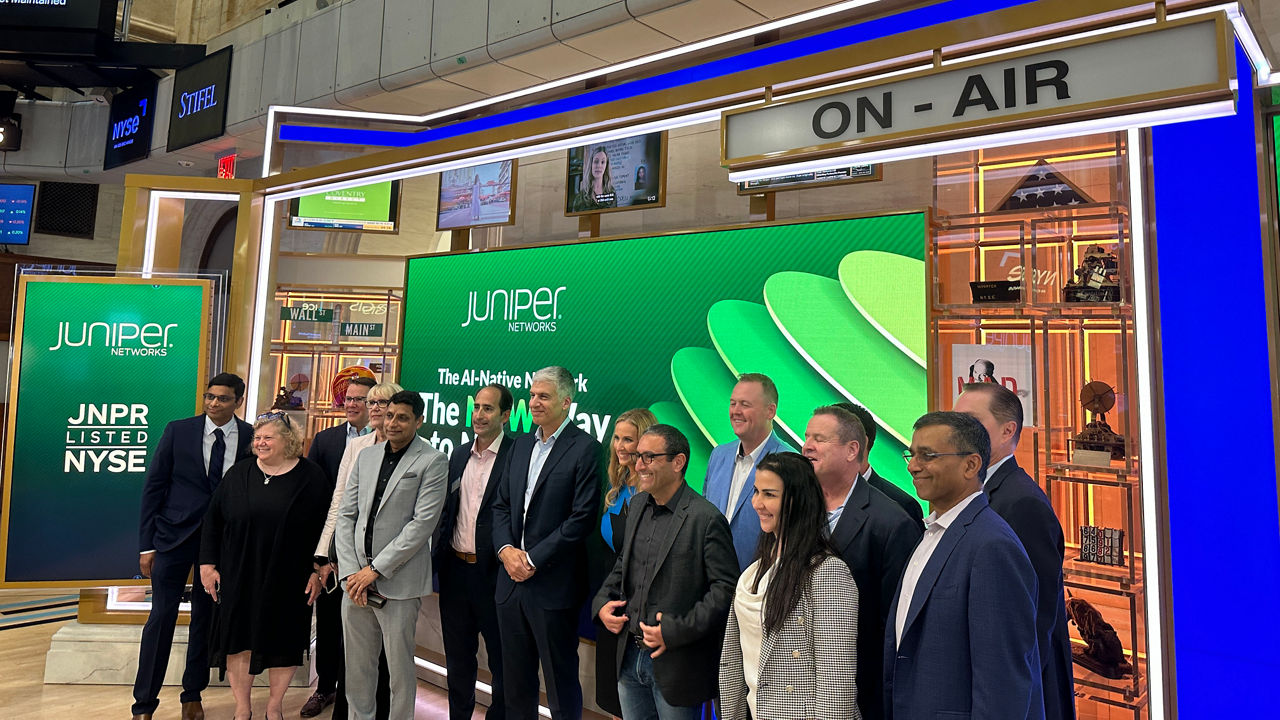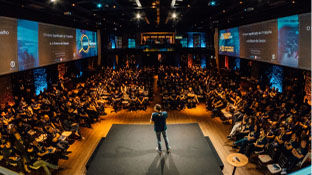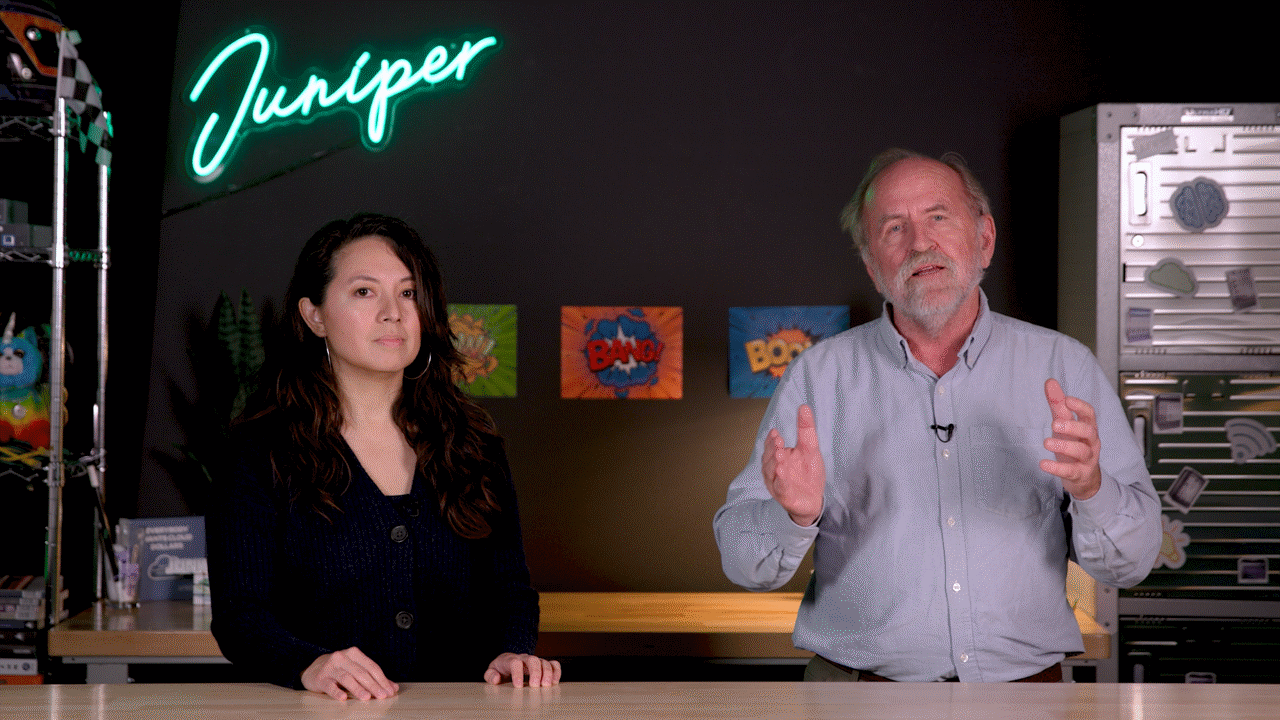More Wide Area Networks


More Wide Area Networks
As AI and data demands surge, how will networks keep pace sustainably?
800G Ethernet is here and key players are working to make it sustainable. Join The Futurum Group's CEO and Chief Analyst Daniel Newman as he sits down with AE Natarajan, EVP & Chief Development Officer at Juniper Networks, as they explore Juniper's latest WAN advancements, including 800GE leadership, intelligent traffic control, and the company's ambitious Net Zero 2040 commitment!
You’ll learn
How Juniper plans to attain its Net Zero commitment by 2040
What the emergence of 800 Gigabit Ethernet means for data centers
How Juniper Networks is leveraging AI, to drive network automation
Who is this for?
Host

Guest speakers

Experience More
Transcript
Intro: Welcoming AE Natarajan from Juniper Networks
0:05 [Music]
0:09 hey everyone welcome back to the 65 on
0:11 the road we are here today for an
0:14 exciting conversation talking about wide
0:16 area networks sustainability AI we are
0:19 diving in with a firsttime guest not
0:21 from a firsttime company we've got
0:24 Juniper Networks joining us we've got AE
0:28 AE welcome to the show this is your
0:30 first time excited to have you here uh
0:32 how you doing today oh wonderful uh it's
0:35 exciting to be here and exciting to
0:38 participate in this conversation you
0:39 know um it is it is it is all about you
0:43 know AI all of this excitement that is
0:46 going on in the network and the
0:47 inflection points it's it's really uh
0:50 it's really up there yeah I I really
0:53 believe you have a really important role
0:55 to play ae Juniper the business you're
0:58 in um we know that there's a lot of
1:01 excitement about silicon and compute
1:03 right now a lot of people tend to forget
1:05 that all this data has to be routed and
1:07 even we know when we spend a lot of time
1:09 talking about scale up infrastructure
1:11 and optical but a lot of stuff has to go
1:13 beyond these data centers we know you
1:15 know as it moves not just within data
1:17 centers but from data center to data
1:19 center from you know data center to
1:21 branch to edge to you know there's so
1:23 much going on and with all this there's
1:25 a lot of kind of these you know
1:27 tangental conversations you've got
1:29 energy and consumption and
1:30 sustainability you've got where does AI
1:33 not just come in in terms of all the
1:35 compute being used for AI but how does
1:36 AI actually help network more
1:38 efficiently so these are a lot of the
1:40 things that are going on really glad to
1:42 have you on the So give me uh give the
1:45 audience just the quick rundown you know
1:47 your EVP chief development officer what
1:49 does that remmit sort of have you doing
1:50 day in and day out at Juniper oh okay uh
1:53 it's uh it's it's an exciting job you
1:56 know uh I'll I'll I'll give you a quick
1:58 preview of what I did i was in the
1:59 networking field for a longest time i
2:01 thought okay networking is just building
2:03 more fatter pipes making things more
2:05 cheaper faster better uh but then uh I I
2:09 went on to build an application and the
2:11 application actually happened to be
2:12 video conferencing um uh the one that we
2:15 were using only to realize that the
2:17 network became such an important piece
2:20 of making this application win big right
2:23 if the network does not give the
2:25 guarantees of jitter throughput latency
2:28 delay any of those metrics in a proper
2:31 way we wouldn't be able to have this
2:33 virtual video conferencing and recording
2:36 uh be really good because it'll be
2:38 choppy voices uh choppy phases all sorts
2:42 of things brought me back to a moment
2:44 saying hey the innovation inside of
2:47 networks needs to be there uh brought me
2:49 to Juniper in a very exciting role to
2:52 build that innovation into our products
2:55 AI
2:56 native which essentially is important
2:59 for these days um uh not just AI with
3:03 compute and uh storage which actually
3:05 delivers training models and then
3:07 inference models and things that we talk
3:09 about how do you use it in every walk of
3:12 life the first part of it is how do you
3:14 take AI and AI models to help you with
3:18 what we build as network routers
3:20 switches and connectivity devices that
3:23 enable to provide the guarantees today's
3:26 network is using critical applications
3:30 if the network goes down you probably
3:32 have 911 calls not happening it is as
3:35 critical as that right so with that in
3:38 mind we really strive to innovate for
3:42 this modern era but with the advent of
3:45 AI that has come in it has actually
3:48 exponentially increase the changes and
3:51 demands that we have in the network
3:53 today so that is what is the excitement
3:56 that I'm here with Juniper because we
3:59 drive these innovations with our own
4:01 silicon and with systems and solutions
4:05 that really are future-looking and
4:09 enable to adapt to these changes much
4:12 more faster and much more easily so that
4:15 we can build it out that's great so
4:16 let's geek out a little bit and talk a
4:18 little bit about some of your your
4:20 products and as well as the chipsets
4:22 that you build i don't think a lot of
4:23 people fully attribute credit that you
4:25 guys are in the chip development space
4:27 you know custom chips um but you know
4:30 you've got ACX you've got MX you've got
4:32 PTX on the routers and then you've
4:33 you've built the Express 5 ASIC Trio 6
4:36 chipsets talk a little bit about how
4:39 they these these developments these
4:41 builds these products that you're you're
4:42 you're creating at Juniper are enabling
4:45 you know sustainable energy efficient
4:48 designs and and and bringing out the
4:50 performance required for these next
4:52 generation networks so so fundamentally
4:55 uh you know uh like you look at these
4:57 networks like we mentioned it right when
4:59 there was an internet boom connectivity
5:01 became very important right uh we
5:03 wouldn't have survived the pandemic
Juniper's silicon innovations for network performance
5:05 without uh without the network right we
5:07 were educating our kids we were ordering
5:09 our foods to entertainment to everything
5:11 with with the network and the changing
5:12 patterns right uh what drives us really
5:16 uh important is we start off with the
5:19 silicon silicon is a fundamental piece
5:21 of what we build here at Juniper so you
5:24 mentioned the Express and the Trio and I
5:26 want to tell you why we built two
5:28 different variations of the silicon trio
5:30 is a silicon that gives you flexible
5:32 pipeline which means it's very
5:34 programmable and it gives you
5:35 capabilities to adapt and adjust to any
5:38 new environments and applications that
5:41 people use typically Trio helps us power
5:45 what we call as the MX product line and
5:48 this has been one of the forerunners for
5:50 Juniper and the MX product line recently
5:53 is been the clear winner for being the
5:57 on-ramp to AI and AI clusters of large
6:02 major hyperscaler and cloud provider
6:05 when they want to onboard their
6:06 customers into their AI clusters these
6:09 are the devices that actually enable it
6:10 because it has the programmability it
6:12 has the capabilities the second silicon
6:14 that we build is the express silicon
6:16 which gives you the speeds and feeds
6:18 when we thought we did 100 gig that
6:20 would be enough it wasn't enough 200 gig
6:23 400 gig now 800 gig and tomorrow we're
6:25 going to talk about 1.60 pipes and these
6:28 pipes are getting filled faster and
6:30 faster with AI really coming into play
6:34 so the performance is really important
6:36 so Express drives that performance and
6:39 we build the PTX product line with that
6:41 performance and that scalability that we
6:43 do while doing both the Express and the
6:47 Trio silicon with our MX and the PDX
6:50 platforms we also take commercial
6:53 Broadcom silicon and build out ACX
6:56 products that actually are beneficial to
6:59 the customers because networks have
7:01 different needs so you need different uh
7:03 different devices in different places
7:05 that drives us to give a full portfolio
7:09 with AI native capabilities in the
7:11 portfolio so that is important for us
7:15 you touched upon another aspect of what
7:17 happens which is sustainability or power
7:20 reduction constantly we strive to reduce
7:23 power starting with our own silicon
7:25 silicon every time we improve upon it if
7:28 it is 2x the performance it is 2x the
7:30 performance with half the amount of
7:32 power that you need to use for it why is
7:34 that important the cost of power is
7:36 skyrocketing the cost of energy is most
7:40 important for us to actually have um
7:43 have a sustainable way by which we can
7:45 build and grow these networks so we
7:47 build it with our silicon we build it
7:48 with our systems we build it with our
7:50 software and we do phenomenal things
7:52 like green traffic engineering and
7:54 things like that to enable people reduce
7:57 power consumptions in networks even to
8:01 the extent of 70 plus percentage points
8:04 right so so let me layer this in you
8:07 also have done a very good job of of of
8:10 being you know among the leaders in 800
8:13 gig and then of course 800 GE tech how
8:15 does that sort of connect to everything
8:18 that you just talked about from a
8:20 hardware standpoint and then of course
8:22 with AI and intelligent traffic how do
8:24 you tie that all together to sort of set
8:27 a you know I I know the ambition within
8:29 Juniper i've spent time with Rammy i've
8:30 spent time with Manuj now I'm spending
8:32 time with you i know you want to you
8:33 want to be the standard in sustainable
8:36 high performance networking are you
8:37 seeing all this come together and get
8:39 you to where you want to go absolutely
8:42 absolutely uh it is uh uh the 800 gig
8:45 couldn't have been uh more perfectly
8:48 timed we lead and pave the way with
8:50 performance with our 800 gig products
8:53 we're the first to actually deliver 800
800 gig technology and AI cluster connectivity
8:55 gig routers uh that is becoming a lot
8:59 more important because if you really
9:02 take the AI clusters that people are
9:04 trying to build out um they need a
9:07 seamless way to connect these huge
9:10 clusters of GPUs when people were first
9:13 talking about 1k GPUs and 16k GPUs now
9:16 they're talking about 200k 250k and some
9:19 of the things are really million GPUs
9:21 right huge and and and guess what these
9:26 GPUs need to talk to each other to train
9:28 models or to inference things and when
9:30 you need to connect these GPUs together
9:33 you really need the network to be there
9:35 and the network has to be seamless and
9:37 provide complete reliability and
9:41 complete seamless no bottlenecks in
9:44 terms of messages and messages delivered
9:47 between the GPUs and the data that is
9:49 delivered so that they can orchestrate
9:51 and do really well so 800 gig has become
9:53 a powerhouse for people to actually
9:56 connect AI data centers AI data center
9:59 interconnects we also do a phenomenal
10:02 innovation on top of that in the van
10:04 where we use coherent optics where the
10:06 router itself drives these optics and
10:10 saves you power and energy and
10:13 complexity in the network removing
10:15 intermediary devices like repeaters and
10:17 others that you don't need anymore large
10:20 content providers are thinking of
10:22 spanning and the entire United States
10:26 with these kind of optics we call them
10:28 go ahead and CRZ plus optics which is
10:30 also part of our portfolio amazing to be
10:33 there at the right time and really
10:36 really enable this AI uh transformation
10:39 that's happening in the industry yeah
10:41 and we're going to talk about AI here a
10:42 little bit but it's I think really
10:43 important for everyone out in the
10:45 audience too to sort of understand that
10:46 you know you're really talking about
10:48 where copper and light meet right it's
10:50 that you know there's a there was sort
10:53 of this a bit of over rotation I think
10:55 in the market that everything was going
10:58 to go light and optical and you know we
11:00 know within the interconnects within the
11:01 clusters there's some extent of that in
11:03 in the rack but when you get outside the
11:06 rack and especially as you move you know
11:08 from you know maybe these biggest
11:10 hyperscalers you're seeing a lot even
11:12 within them you're seeing a lot of
11:13 standardization on Ethernet and um and
11:16 that I think bodess really well for what
11:18 you're doing but then of course you do
11:20 need optical in the right places for
11:21 certain types of connectivity and so the
11:24 fact that you're addressing all of it I
11:25 think some people really kind of
11:26 sometimes think juniper they think a
11:27 little bit more about traditional
11:28 networking but you're really attacking
11:30 all the vectors to address AI so let's
11:33 talk AI a little bit more um you're
11:36 using AI you're enabling AI from what
11:38 you just talked about you're also using
11:40 AI though um you know Mist uh Paragon um
11:46 and and you're doing this to drive more
11:47 efficiency out of the network And again
11:49 this brings sustainable uh outcomes it
11:53 lowers energy utilization you know talk
11:55 a little bit about kind of how you guys
11:56 are thinking about your AI uh
11:59 innovations um actually uh the way we
12:02 started this was uh Juniper was one of
12:05 the first to talk about what we call as
12:07 self-driving networks and self-driving
12:09 networks wouldn't have been possible
12:11 without using AI to enable people to
AI-driven networking for efficiency and sustainability
12:15 operationalize that network in a lot
12:17 more easy fashion right the first things
12:19 first about trying to do this is to get
12:21 visibility and observability in the
12:23 boxes that you're doing collecting a a
12:26 rich set of telemetry ability for us to
12:30 view that telemetry not just from one
12:32 device but from the network onwards
12:35 right and be able to actually utilize
12:37 that inference that build advanced
12:40 huristics build models to do this i'll
12:42 give you a simple example of what we did
12:44 about six seven years ago one of my key
12:46 engineers came to me and said traffic
12:48 engineering is actually the most complex
12:51 things that you can do in the network
12:52 that means the ability for you to
12:55 traffic load balance across um across
12:58 the entire network paths this is no
13:00 different than the freeways here in the
13:02 Bay Area right you use ways or something
13:04 it redirects you based on traffic
13:06 patterns and stuff like that the
13:07 complexity of that required us to build
13:10 AI models and to train them and we
13:13 trained those AI models what we
13:15 discovered was uh something interesting
13:18 the links were used only 44%
13:20 utilization and an average but there
13:23 were peaks and then there were valleys
13:26 the valleys made us think a little bit
13:28 more harder and say hey could I shut off
13:30 this link and save power could I shut
13:33 off this node should I should I
13:35 rebalance the routes should I rebalance
13:36 the traffic should I get better SLAs's
13:39 all of those things are how we started
13:42 with the genesis of how AI was built
13:44 into it we also have a recent innovation
13:46 where we've built the capabilities known
13:49 as an LLM connector that allows somebody
13:52 to go into our router and actually use
13:55 GI capabilities with their own LLM and
13:58 query their router and say "Hey you know
13:59 how do you want to do this?" And it was
14:02 funny because when we first displayed
14:04 this innovation in front of customers it
14:08 was an Italian customer and we started
14:09 typing in Italian the answers came out
14:11 in Italian people just loved it we did
14:13 the same thing in Japanese and now guess
14:16 what i don't need to actually have
14:20 translators or translations people can
14:22 actually train in their local languages
14:24 and people can understand and comprehend
14:26 the complexities of what we do in a very
14:29 simple way built into our AI native
14:32 products that enable this general AI
14:35 networking right and with that and with
14:38 the performance we also do the
14:40 networking for AI and there's a lot of
14:42 networking to be done a lot of routing
14:45 to be done AE um you know one of the the
14:48 things I think is very interesting that
14:50 Juniper's been working on is it's uh
14:52 universal routing platform um as
14:56 networking continues to evolve what we
14:58 route and how we route and where we
15:00 route you know needs more flexibility
15:03 you know we often uh you know we worked
15:05 within a lot of constraints but just
15:07 like how data needs to be more malleable
15:11 for AI you know you're seeing kind of
15:12 all these neo storage solutions that are
15:14 coming out because like we don't want
15:17 just file and block and you know we need
15:19 a basically a system that can read all
15:22 types of different data and access it
15:24 otherwise you know it take it just puts
15:25 more strain on everything network and
15:27 compute and you know so you're trying to
15:29 solve this for routing talk a little bit
15:31 about that yeah So uh uh this is this is
15:34 interesting because we we have been in
15:37 foremost in the innovation cycle for us
15:40 to be able to do um uh control plane and
15:43 admin plane and networks what we mean by
15:45 that is the ability for us to actually
15:48 drive uh how uh the network gets built
Universal routing platform for flexible networking
15:52 and how the routers talk to each other
15:54 to discover how the network is being
15:56 built and the links that are going on in
15:58 the network not only the links the
16:00 capacity of the links the throughput of
16:02 the links the current data that is
16:03 flowing through the links the ability to
16:05 provide feedback on those links in terms
16:07 of delay throughput jitter metrics and
16:09 other things that we can do we actively
16:12 put elements into it and we constantly
16:15 keep innovating to build on top of it
16:18 when we do this these innovations
16:20 actually are spread across every piece
16:23 of our devices that we build whether it
16:26 is the MX whether it is the PTX whether
16:28 it is the ACX whether it's a QFX or or
16:30 even the EX switches that we built all
16:33 of them carry this in a very seamless
16:36 way and they all react to it and build
16:40 total solutions that are needed for
16:42 today's network whether it is
16:44 enterprises whether it is large service
16:47 providers or cloud providers all of them
16:49 are able to use these elements to
16:51 actually drive the performance and one
16:54 of the embodiment of this is clearly our
16:57 MX304 the recent platform that we
16:59 launched has become a de facto for
17:02 people to be able to use this to onramp
17:05 a lot of um you know uh how you get
17:09 customers onto an AI um uh AI network or
17:14 an AI cluster which is amazing every
17:16 major hyperscaler uses this platform to
17:20 actually onboard their customers into
17:21 their AI clusters and AI native clusters
17:24 to be able to do both um uh uh
17:27 inferencing and other elements where
17:29 they can actually query do all of that
17:31 stuff that's amazing and this platform
17:34 is rocking and it's really really uh
17:37 catering to the needs of the people and
17:40 by the way this platform is built with
17:41 the trio which I talked to you about
17:43 that gives you the flexibility and and
17:47 ability to program and change it for any
17:49 growing and changing needs today we talk
17:52 about something tomorrow somebody comes
17:54 and says "Hey I need these filters I
17:56 need these changes I need these
17:57 different kinds of things put in the
17:59 packet." We can do that and it makes it
18:01 a lot more easier and simpler for us to
18:03 do yeah well like I said I think uh
18:05 fungeability is going to be very
18:06 important as network standards continue
18:09 to evolve as we sort of see ourselves
18:11 flowing back and forth between uh you
18:14 know high-speed copper and high
18:16 performing optics and of course we just
18:18 we've got so much change and it's
18:20 happening so fast i mean we're on annual
MX304 platform for AI network onboarding
18:23 cycles now one-year cycles which I don't
18:26 I I really don't envy the capex
18:29 management that these hyperscalers are
18:30 dealing with right now but I of course I
18:33 I am absolutely thrilled with how
18:35 exciting fast and how much money is
18:37 being spent to build out this AI future
18:39 ae um let's wrap up talking about
18:42 something positive something I think is
18:44 really encouraging you know I know that
18:48 during this sort of shift we've had a
18:50 pretty big shift in landscape political
18:52 shift and this is not a political show
18:54 but it's you know we we've seen a change
18:56 a little bit in in things like
18:58 sustainability and how much it's been in
19:00 focus um I think everyone most of the
19:03 tech industry agrees of its importance i
19:05 think they agree with its importance for
19:07 not just kind of the more altruistic but
19:09 also because you know if we want to keep
19:10 innovating we need to be thoughtful
19:12 about how we apply energy to solve
19:14 problems actually the tech industry's
19:16 always been very thoughtful about this
19:17 but as we build out AI AE we see
19:20 exponential growth that was like how do
19:22 we keep comm committed to this to this
19:24 zero emission like especially these
19:26 hyperscopes how do we stay committed
19:27 when all of a sudden we've we've
19:28 increased energy commit uh consumptions
19:30 by exponential amounts in like just a
19:32 year and the truth is they really can't
19:34 but you can you have basically doubled
19:38 down Juniper is saying no we're sticking
19:40 to it we're staying with our net zero
19:42 2040 uh commitment I'd love to hear a
19:45 little bit more from you about you know
19:47 how you've been able to to do this and
19:50 why you feel it's important important to
19:52 stay committed to this net zero by 2040
19:55 that you put out there so uh the reason
19:58 why this is important is because if you
20:00 really look at our uh look at how energy
20:04 costs have actually gone up and up and
20:06 up um whether uh and it is even more
20:10 significant in the rest of the world and
20:13 United States has started seeing it
20:15 right uh you see our um our energy bills
Juniper's commitment to net zero emissions
20:18 go up and if you go back and talk to
20:20 anybody who is building AI clusters uh
20:24 everybody thinks that those guys are
20:26 paying huge amounts of bills to uh this
20:29 small Silicon Valley company or a
20:30 Silicon company here in the valley but
20:33 they are also paying a much larger bill
20:37 a recurring bill yearoveryear to the
20:39 power
20:40 companies okay and if they if you
20:42 dissect that budget this this bill is
20:45 much huger our ability to tell our
20:49 customers and our people when they
20:51 deploy Juniper technology that they will
20:54 have the power efficiency to the finest
20:57 extent as they grow and scale up their
20:59 network and don't necessarily have to
21:01 burn more and more power is important
21:03 for us so that value and the commitment
21:07 to make that happen requires us to drive
21:11 drive it all the way from every aspect
21:14 that we do from our silicon which is the
21:16 most power
21:18 efficient tomorrow we're going to be
21:20 talking about space technology because
21:22 we have to launch these routers in space
21:24 or launch these routers in low orbit
21:27 devices and other things guess what
21:29 there is no power generators down there
21:31 you need to be extremely extremely power
21:33 efficient in space and guess our chips
21:37 are one of the most efficient ones that
21:39 is capable of being launched into space
21:42 that is the reason why we continuously
21:45 commit ourselves to building these kind
21:47 of chips building these kind of devices
21:50 solutions and continue to plow through
21:53 why we need to have power efficient
21:57 commitments that are important for us
21:59 all the way through if not today
22:02 tomorrow it is going to happen and
22:04 you're absolutely right everybody is
22:06 power hungry with AI clusters people are
22:08 consuming more power if we can everybody
22:10 pay attention to it in the longer term
22:12 it'll become a lot more easier for us to
22:15 build much more scalable networks and we
22:17 want to drive that innovation well I
22:19 want to thank you so much for taking
22:20 some time with me here on the 65 it was
22:23 great to sort of get the story and and
22:25 really tying some themes together i
22:27 think sometimes we want to look at
22:29 sustainability AI you know we want to
22:32 look at networking we kind of look at
22:33 these things as all these kind of silos
22:36 and I think the one thing we're learning
22:37 especially as we move from kind of this
22:39 first era of AI and ML to this
22:42 generative era to really this agentic
22:44 future is increasingly you know it's
22:47 it's outcome driven and the outcome
22:49 driven includes kind of the
22:50 incorporation of we got to manage the
22:52 power situation we've got to get data
22:54 from point A to point B um high fidelity
22:57 low latency you know we need enough
22:59 compute power to get this done we of
23:01 course need software that overarches all
23:03 this stuff and gives whether it's
23:04 flexibility in routing you know where
23:06 your engineers can design routing or
23:08 it's the ISVs being able to code on top
23:10 of this stuff and be able to get
23:11 solutions that work to people it sounds
23:13 like Juniper is doing a lot i know
23:14 there's a lot going on there you're in
23:16 the middle of a pretty big deal um
23:18 crossing my fingers you are able to get
23:19 that over the line but it was just great
23:21 to spend some time with you love to have
23:23 you back on the show um let's uh let's
23:26 talk again soon a Oh thank you thank you
23:28 very much really excited to be on the
23:30 show and I really enjoy it because like
23:32 you said it's all coming together and if
23:35 you don't see it as a full picture
23:37 you're missing the plot right so we're
23:39 we're glad we're seeing the full picture
23:41 and we're driving towards all that thank
23:43 you appreciate it very much and I
23:45 appreciate everyone out there for tuning
23:46 in to this episode of 65 on the road
23:49 great conversation here hit that
23:51 subscribe button join us for all of our
23:53 content we have a lot of great content
23:55 here on the 65 but for this episode it's
23:59 time to say goodbye i'll see you all
24:00 later
24:07 [Music]



